Love the clothes you have
‘Visible mending’ workshop takes aim at fast fashion’s disposable culture. Here, stitches and patches are things of beauty.
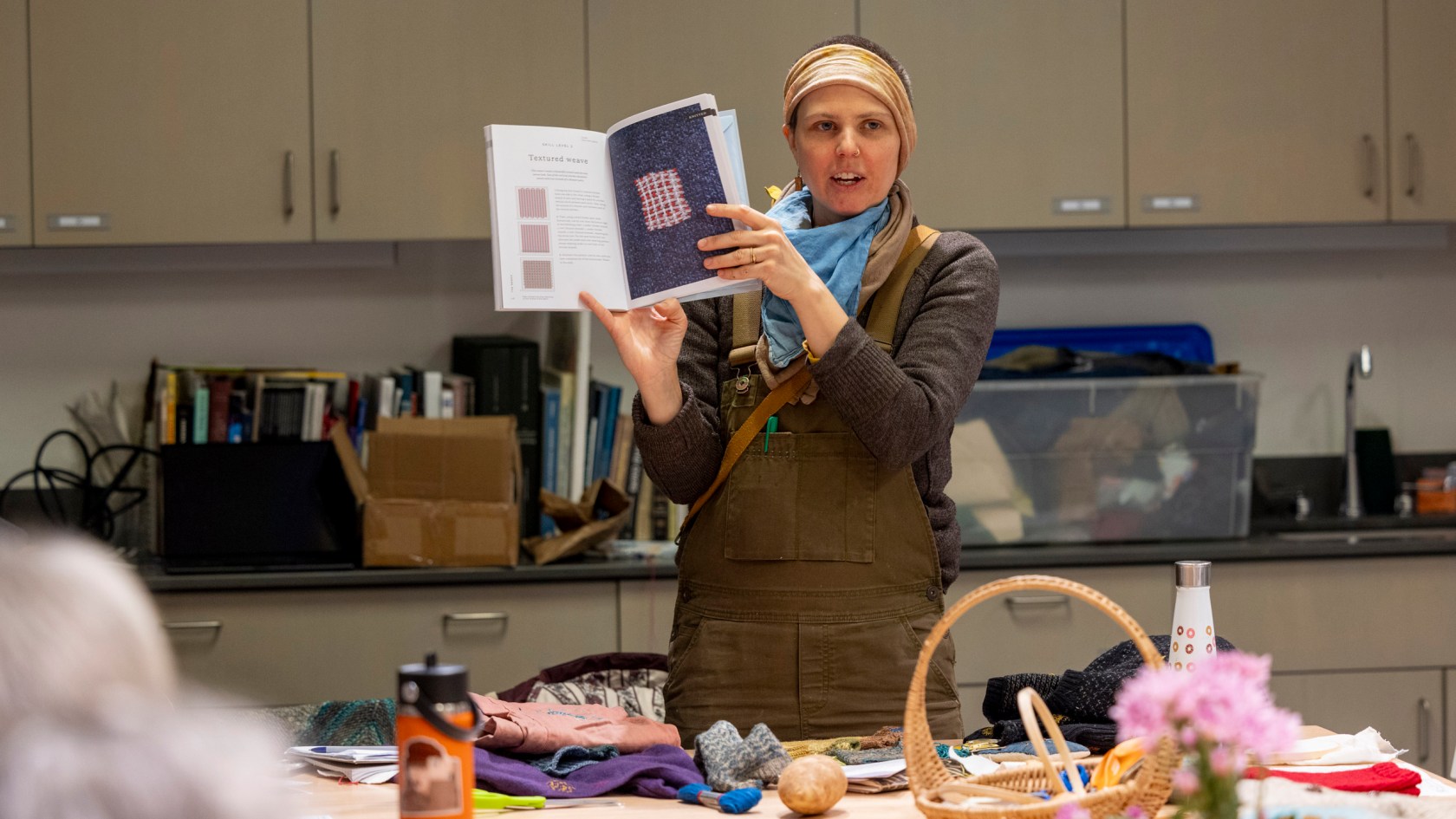
Maggie Ruth Haaland during her workshop on darning and patching knitwear at the Art Museums.
Photos by Scott Eisen
Got a hole in your favorite sweater, or a sock that’s more fishnet that foot cover? A recent “visible mending” workshop at Harvard Art Museums invited participants to join a growing subculture of sustainable sewers who are rejecting fast-fashion consumerism.
“Mending is kind of having a moment right now,” said Maggie Ruth Haaland, who led an introduction to darning and patching knitwear on a recent weekend. “People are thinking about how to make different choices around what they’re consuming, and mending can be a really helpful tool in that process.”
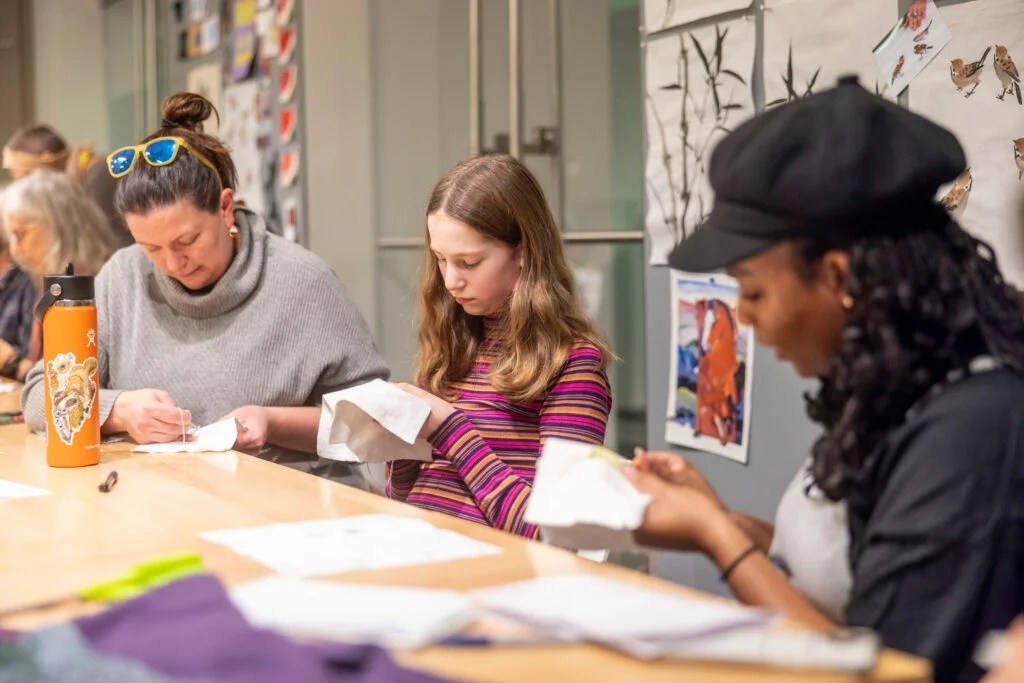
Eighth-grader Arden Vigoda, who attended the lesson with her mom, Lauren Stewart, agreed.
“People are producing too much clothing and there’s so much stuff already here that there’s plenty to use,” she said. “I’m trying to start a business in my community where I tell people to go through the bowels of their closets and donate stuff to me so I can fix it and give it back to them for money.”
Stewart said her daughter has been learning to sew and bedazzle and has been in a few local fashion shows. “I’m not very handy, so it’s all very interesting to me.”
“There were two goals here. One is learning skills to do the actual mending and then also having these discussions and shifting ideas about being consumers and how we relate to garments.”
Maggie Ruth Haaland
“Visible mending,” or mending garments so that the repairing stitches and patches can be seen clearly, has been gaining popularity among textile artists and environmentalists alike, said Haaland. An interest in herbalism and plant-dyeing initially drew Haaland to visible mending but the communal aspect is also key.
“There were two goals here. One is learning skills to do the actual mending and then also having these discussions and shifting ideas about being consumers and how we relate to garments,” Haaland said. “But then also having the second half be more casual, where folks can just chat with each other as a community-building kind of thing.”
Workshop participant Julie Brown-Garthwaite, from Hamilton, Massachusetts, brought a quilt made by her mother in the 1970s to repair. “She grew up in an era where mending was what you did and you made your own clothes, particularly for your children. She would not say she was a super expert seamstress but she made us a lot of clothes when we were little.”
Brown-Garthwaite, who was patching the red-white-and-blue quilt with purple fabric, anticipated showing her mother, 87, the project later that weekend. “She’ll be very upset with my color choice.”
Haaland expressed hope the workshop gave participants new inspiration.
“I think shifting your perspective around the things that you own is really helpful for creating larger systemic change. Once you’ve changed your mindset, it becomes a fun thing or an opportunity.”
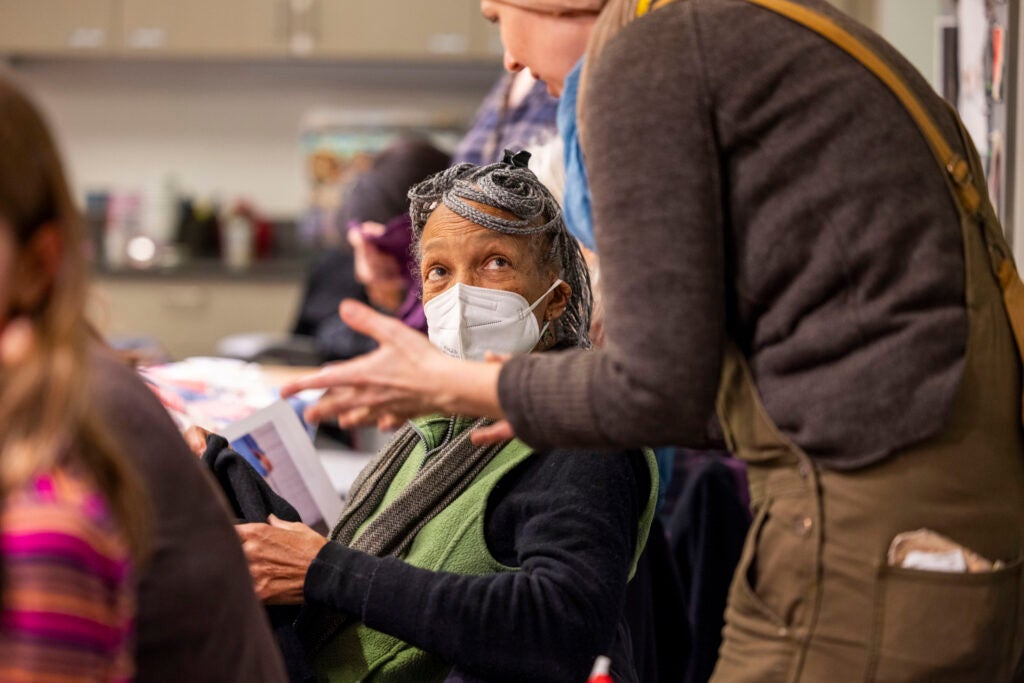
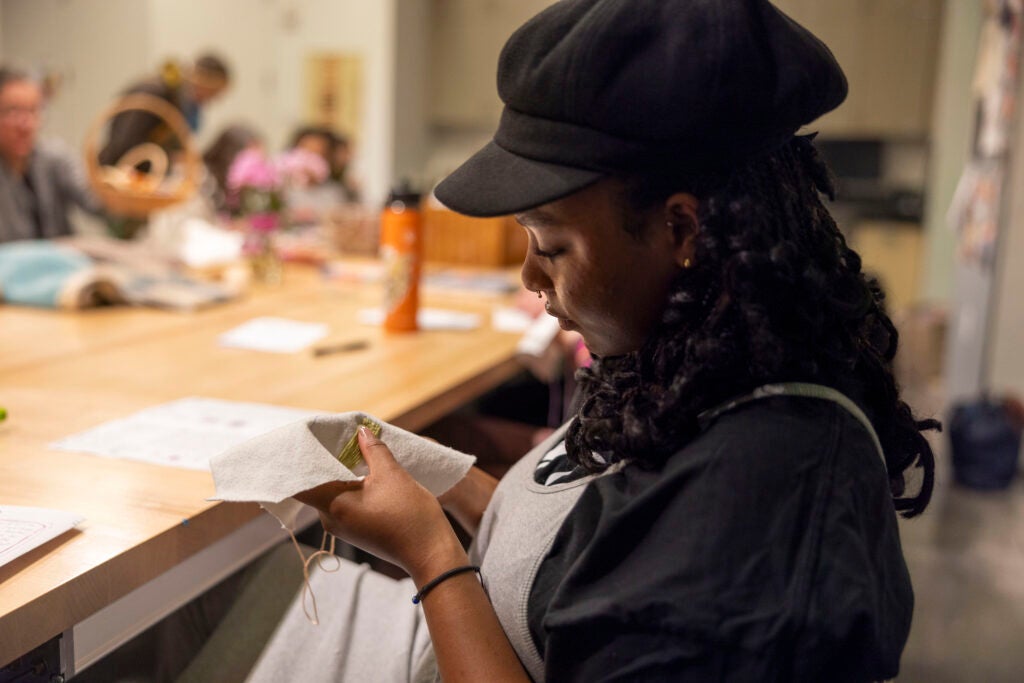
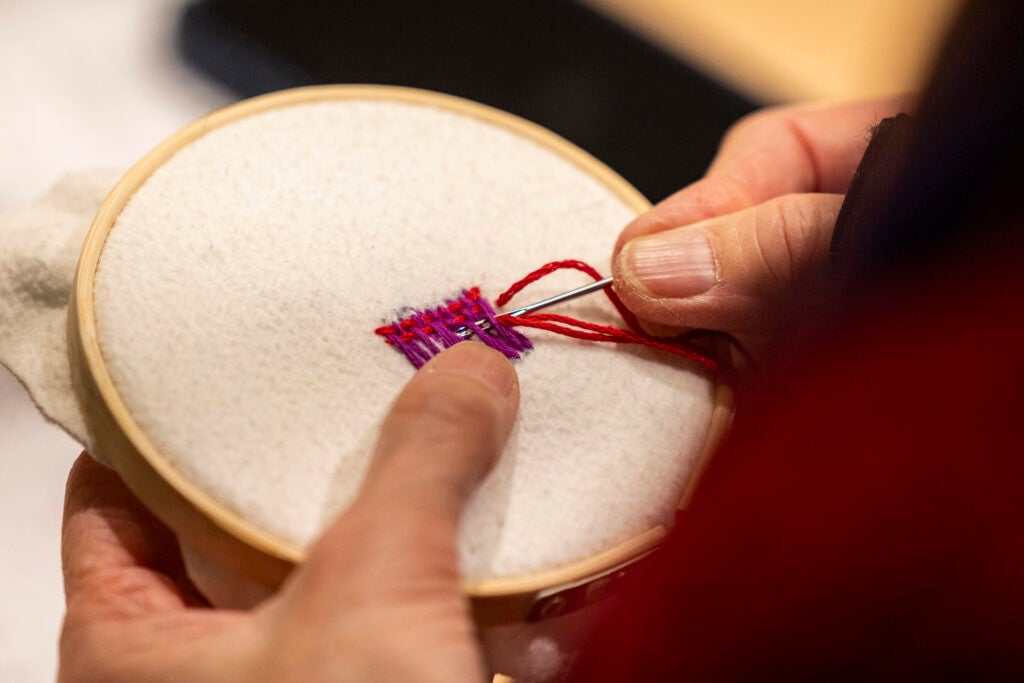
Haaland will lead another workshop on Feb. 17 that focuses on embroidery and stitchwork. On March 2, the Materials Lab will host Aquinnah artist Elizabeth James-Perry for a workshop on cornhusk weaving and on March 20, there will be a workshop with artist Nard Kwast to explore how to paint with the methods and style of 17th-century Dutch artists.
“There seems to be an increasing interest in crafts, and generally, in do-it-yourself activities,” said Francesca Bewer, who directs programming for the Materials Lab and is the research curator for conservation and technical study programs for the Harvard Art Museums. “There is so much unnecessary waste in our consumer society, and at the same time more awareness, especially among younger people, about the urgency to apply our creativity to interrupting that cycle, to valuing what we already have and to transforming that in meaningful and satisfying ways.”




